I've recently had to change from using Cypher to Gremlin and I'm trying to convert a query that allowed a user to 'delete' a node and all of the subgraph nodes that would be affected by this. It wasn't actually removing nodes but just adding a 'DELETED' label to the affected nodes.
I can get a subgraph in Gremlin using:
g.V(nodeId).repeat(__.inE('memberOf').subgraph('subGraph').outV()).cap('subGraph')
but this doesn't take into account any nodes in the subgraph that might have a route back past the originally 'deleted' node and therefore shouldn't be orphaned.
If you take the graph above; B is the node being deleted. It's subgraph would include D, E, G and H. However, since E still has a route back to A through C, we don't want to 'delete' it. D, G and H will be left without a route back to A and should therefore also be deleted.
My Cypher query worked like this (using Neo4jClient.Cypher in C#):
// Find the node to be deleted i.e. B
.Match("(b {Id: 'B'})")
// Set a DELETED label to B
.Set("b:DELETED")
.With("b")
// Find the central node i.e A
.Match("(a {Id: 'A'})")
// Find the subgraph of B ignoring previously deleted nodes
.Call("apoc.path.subgraphAll(b, { relationshipFilter: '<memberOf', labelFilter: '-DELETED'})")
.Yield("nodes AS subgraph1")
// Get each node in subgraph1 as sg1n
.Unwind("subgraph1", "sg1n")
// Check if each sg1n node has a route back to A ignoring DELETED routes
.Call("apoc.path.expandConfig(sg1n, { optional: true, relationshipFilter: 'memberOf>', labelFilter: '-DELETED', blacklistNodes:[b],terminatorNodes:[a]})")
.Yield("path")
// If there is a path then store the nodes as n
.Unwind("CASE WHEN path IS NULL THEN [null] ELSE nodes(path) END", "n")
// Remove the nodes in n from the original subgraph (This should leave the nodes without a route back)
.With("apoc.coll.subtract(subgraph1, collect(n)) AS subgraph2")
// Set the DELETED label on the remaining nodes
.ForEach("(n IN(subgraph2) | SET n:DELETED)")
Is there any way I can get similar functionality in Gremlin?
UPDATE
Thanks to sel-fish's help in this question and in this one, I now have this working using:
g.V(itemId) // Find the item to delete.
.union( // Start a union to return
g.V(itemId), // both the item
g.V(itemId) // and its descendants.
.repeat(__.inE('memberOf').outV().store('x')) // Find all of its descendants.
.cap('x').unfold() // Unfold them.
.where(repeat(out('memberOf') // Check each descendant
.where(hasId(neq(itemId))).simplePath()) // to see if it has a path back that doesn't go through the original vertex
.until(hasId(centralId))) // that ends at the central vertex .
.aggregate('exception') // Aggregate these together.
.cap('x').unfold() // Get all the descendants again.
.where(without('exception'))) // Remove the exceptions.
.property('deleted', true) // Set the deleted property.
.valueMap(true) // Return the results.
